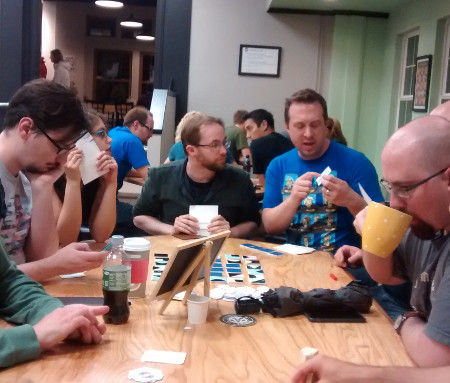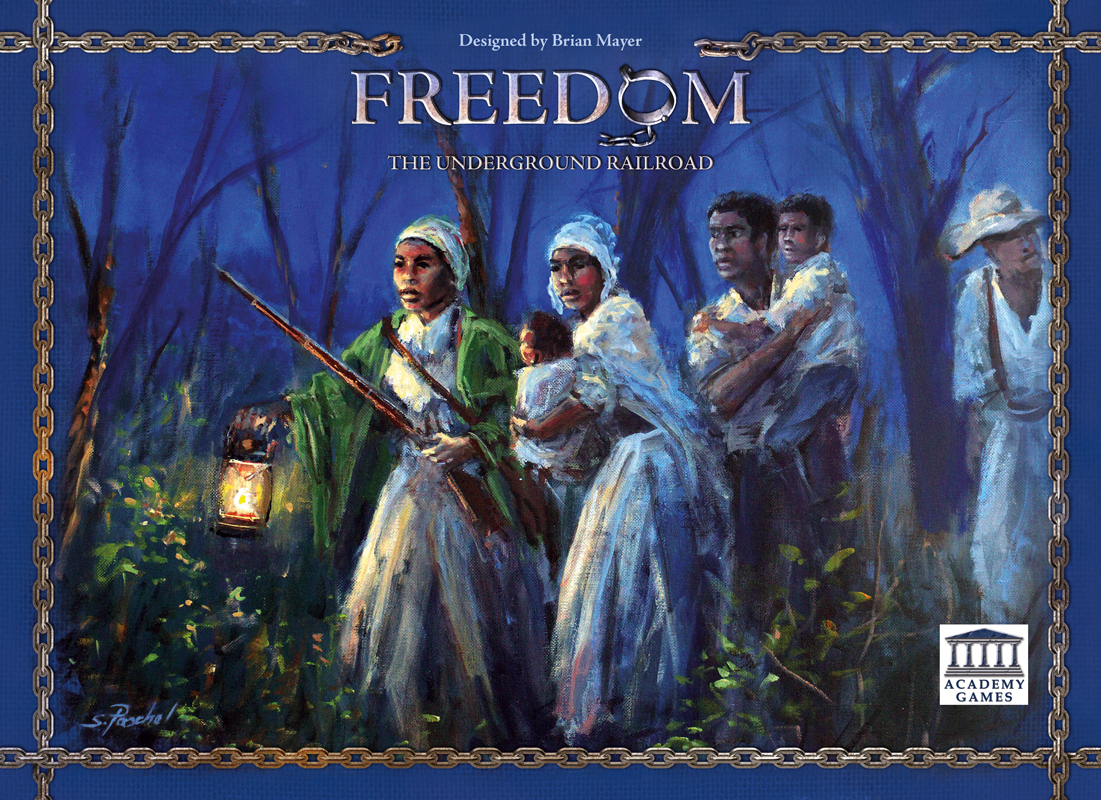 Dr. Mark Mills drawing diagrams on a blackboard during testimony before the Congressional Joint Atomic Energy Committee hearings on atomic radioactive fallout, 1957. Hopefully integrating games into your curriculum isn't quite this complicated.
Dr. Mark Mills drawing diagrams on a blackboard during testimony before the Congressional Joint Atomic Energy Committee hearings on atomic radioactive fallout, 1957. Hopefully integrating games into your curriculum isn't quite this complicated.
Hello readers of Spielbound.org! The summer may be in full swing but that doesn’t mean that work stops for teachers. We’re participating in summer programs, working on strategic planning, and writing next year’s lessons! At Spielbound my goal for the summer is to start some serious work on getting some teacher guides going to help classroom teachers get the basic information they need to consider using existing games as part of their curriculum.
As I started this process, my biggest goal was to incorporate the realities of classroom teaching into a resource that would help an educator take the first steps into using games. I’ve spoken on this blog before about how logistics can be a challenge in the classroom. We have standards that we must meet. This doesn’t prevent us from innovating curriculum, but it means that we have to be very efficient in squeezing as much time as possible out of our available class time. For games, that means that any teacher guide that we produce at Spielbound needs to communicate how much time it could take students to have a great experience with a game. But that’s just a beginning.
Without alignment to content and skill standards, a game in the classroom becomes simply a fun thing to do. There is nothing wrong with fun! Teachers know that directed fun allows us to get the best of both worlds. We want students to see learning as fun as well. Learning on its own or fun on its own pales in comparison to the two combined. So our teacher guides need to not only have a basic standards alignment, but also a series of questions that could get teachers started for assessing what students learned from playing the game. Discussing what went well, what did not, and connection to facts and ideas makes for a richer experience.
Another example is special tips that will be necessary for teaching games. Not all educators play board games and just like any content set or skill set there are tricks that we keep up our sleeves that help learners understand goals. For example, I’ve found that the best way to begin teaching any game is to start with the objective. How do you “win?” Following up with a discussion of game pieces and individual player goals comes next. Finally, a discussion of the turn order or simply diving right into modelling game play is a great third step. In short, the teacher guides will have tips to help teachers teach the game to students.
 A discussion of game rules and pieces by local board game designers, the
Spielmasons.
A discussion of game rules and pieces by local board game designers, the
Spielmasons.
Those are just a few examples of how I want to ensure that Spielbound’s Teacher Guides are practical and concise so teachers will want to use them. For this first guide, here is a breakdown of the topic categories:
- Introduction: brief overview of the game and its intended audience
- Logistics: how many players, how long it takes to set up, how long it takes to teach/play, etc…
- Standards alignment: alphanumeric alignment only to some relevant NE State and Common Core State Standards
- Content considerations: any content warnings for parents that may be important to consider
- Tips for teaching this game: general and specific suggestions to be efficient in helping students begin
- Tips for while students play: general and specific suggestions to help make the game play about the objective
- Potential questions to ask students: a starter list of questions to help teachers begin to think about how they might encourage and measure learning
- Suggestions for a shorter game: ways to shorten a game, without losing its meaning or utility, tested by Spielbound staff
These categories are likely to change as we create more guides. The goal will always be to have an efficient, practically-minded starting point to help teachers get started.
So what is our first Teacher Guide? It is Freedom: The Underground Railroad by Academy Games. This cooperative board game respectfully puts players in the role of Civil War- and Reconstruction-Era Abolitionists trying to help former slaves to reach the safety of Canada. The game would work well as part of, or the centerpiece of, a middle school unit on slavery in the US and the Civil War. It could also work well as part of a game club, gifted program, or after-school program. This will be the first of several guides we’d like to produce over the next year. Stay tuned for a future blog post about our play-testing and guide design process!
Spielbound has eight copies of Freedom: The Underground Railroad available for classroom teachers to check out. Contact Library Coordinator Marcus Ross (marcus [at] spielbound.org) to reserve copies for specific dates. Also, don’t hesitate to contact Michael Fryda (teachers [at] spielbound.org) with any questions about integrating or adapting Freedom or any other game into your school program!

